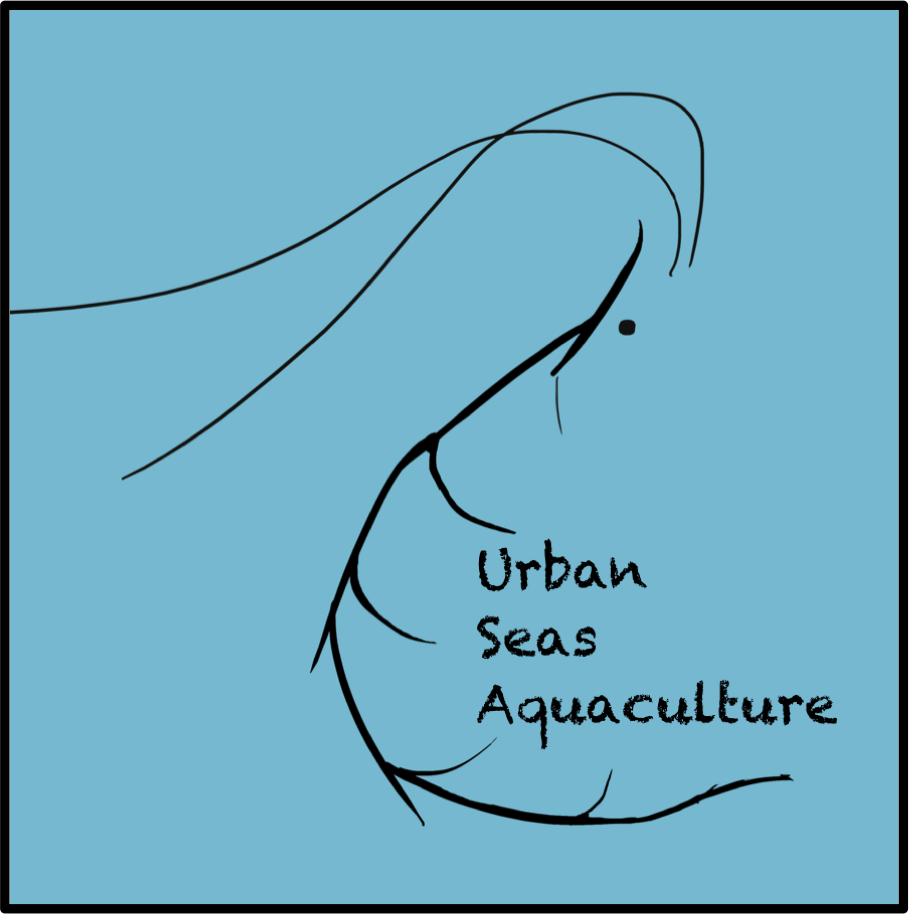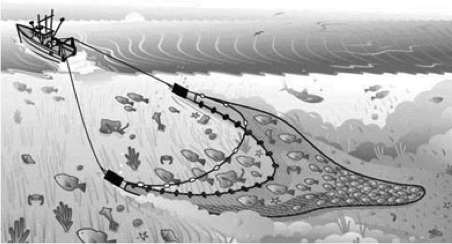What is Aquaculture
Aquaculture, or sea farming, is the farming of fish species. In regards to shrimp, this can be done through coastal farms or through recirculating systems.
There are only two shrimping seasons in the U.S., meaning that about six months out of the year the shrimp you are eating is either imported or farm-raised. These farms destroy mangrove forests, which are essential habitats to many fish species, and leach chemicals and shrimp excrement out into the ocean.
Shrimp that are caught in the open ocean are generally caught using the otter trawl. This is essentially a giant bulldozer that scrapes the seafloor, killing the benthic habitat in search for shrimp. While this trawl does indeed catch millions of shrimp, it also catches several other marine organisms that are then thrown away as trash. When open sea trawling, up to 15 pounds of wild fish are regularly killed to bring one pound of shrimp to the market.
Urban Seas Aquaculture system
Recirculating Aquaculture vs. Coastal Farming
While there are a couple forms of shrimp farming, the most sustainable shrimping method is through recirculating aquaculture. This is when shrimp are grown in fully contained large salt-water swimming pools. The recirculating system produces little to no external waste. This environmentally friendly system is the perfect place for shrimp to be contained from stresses and survive on the clean nutrients we feed them. This is the system Urban Seas Aquaculture is using and we guarantee no chemicals are added to the system and no external waste is being expelled into the environment. Not only is this environmentally sustainable, but it also means our shrimp are plump with healthy shrimp meat, and not chemicals.
Coastal Shrimp farm. Image: Sebastien Blanc/AFP/Getty Images
Coastal farms are a popular form of aquaculture, but they are unfortunately riddled with problems. Using the coastal ocean, a large net is anchored to create a barrier for the shrimp. Shrimp can’t escape the net, nor can other fishes enter, but water can circulate through. In order to build these giant nets the shoreline mangroves are cut down and the mangroves that aren't cut, quickly die from the chemicals and shrimp excrement leaching into the environment as high tide comes in. Many fish and invertebrates use the mangroves as a safety home, a breeding ground, and a feeding nursery. Mangroves also serve as a natural biofilter for marine nutrients that would be otherwise toxic in high concentrations.
Bottom Trawler. Image copyright © Michael C. Barnette. Lost at Sea. 2004
Why not just catch shrimp naturally from the ocean?
Unfortunately open sea fishing for shrimp is not a sustainable fishing practice and one that results in the death of hundreds of other marine organisms. Open sea fishing can be done through several methods, but by far the most common is bottom trawling because it provides the highest yield. Bottom trawling essentially means taking a giant bulldozer and scraping it along the seafloor to scoop up all the shrimp, and all the other organisms living in the sand bed. The catch is hauled to the surface where the shrimp are separated to be put on ice and sold ashore. The rest of the fish are dumped back in the ocean, often already dead or seriously injured. Their home (the seafloor) is scraped clean and gone. These poor creatures are called bycatch and are an unfortunate casualty in the process of bottom trawling.




